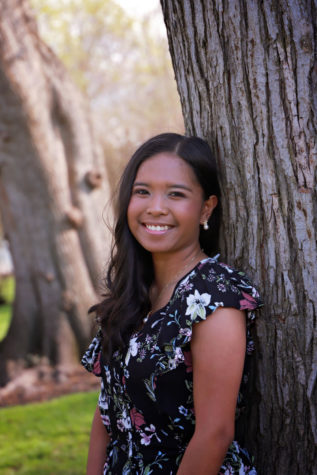
Loren Negron served as the editor-in-chief for fall 2021. She started working for The Daily Evergreen as a news reporter in fall 2019 and moved her way...


Leaders presented peace as combination of two distinct human practices
January 22, 2020
A workshop focused on compassion and listening encouraged attendees to engage in mindfulness to connect with others and deal with difficult situations.
Community Wide Mindfulness Hour: Social Justice and Engaged Mindfulness happened on Monday at the Elson S. Floyd Cultural Center as part of WSU’s 2020 celebration of Martin Luther King, Jr.
Cory Custer, director of compassion at Brighton Jones and WSU Honors College adjunct associate professor, facilitated the workshop. Custer centered his program on this equation: Mindfulness + Compassion = Peace.
Custer represented this formula by using a dove. He said the dove is a bird of peace with one of its wings representing mindfulness, and the other compassion. Both wings are needed for the dove to fly.
Mindfulness means to be present and to be proximate with another person, Custer said. It also means to share a space with someone and to be engaged in the experience of listening to people share their truths.
“I like to think of mindfulness and compassion practices as human nature because it is our birthright to be at peace, and it is our natural settings when we were born to be compassionate and loving and kind,” he said.
Trymaine Gaither, event organizer and WSU Honors College recruitment and career coordinator, said mindfulness creates safe spaces where people can have difficult conversations and discuss similarities. He said this is important when practicing compassion, which for him means to learn how to suffer with others.
With Custer’s equation, attendees were asked to practice three basic mindfulness techniques: to sit, to breathe and to be aware. They sat upright, closed their eyes and learned to be more aware about sensations they felt in their body and around their environment.
Attendees also participated in advanced mindfulness training by reflecting on a messy or challenging memory from their life. They were asked to acknowledge their suffering and give their difficult situations a metaphor.
One attendee described her metaphor as a drowning sensation where there seems to be no avenue for escape.
Afterward, attendees paired up and were asked to look at their partners for about 30 seconds while Custer shared statements of common humanity that began with the words “Just like me.” This was to encourage individuals to be mindful of their partners’ suffering and learn to be present.
“We’re holding space for someone else’s suffering,” Custer said. “Holding space for that person, I would say, is the highest form of compassion.”
During the pair-up activity, everyone was given three minutes to share what was difficult in their lives while their partners listened to them. Custer invited attendees to hold space for themselves and to practice self-compassion.
Custer said individuals must lean into their difficulties rather than distracting themselves from their suffering.
“Differences, difficulties ― they make us uncomfortable,” he said. “There’s a physical sensation associated with that. Our bodies know that; our bodies want out of there.”
Gaither said he saw many “A-ha moments” in people’s eyes during the event. He said those moments encourage people to have difficult conversations about racism, sexism, ableism and inequity with people they might consider as the “opposition.”
Those conversations will lead to deeper insights, Gaither said. He said he believes that those insights will help people commit to their communities and to love and compassion.
“The Palouse is one of the most fertile grounds in the world,” he said. “The seeds are there. We just have to water it and not harden our hearts.”

Loren Negron served as the editor-in-chief for fall 2021. She started working for The Daily Evergreen as a news reporter in fall 2019 and moved her way...